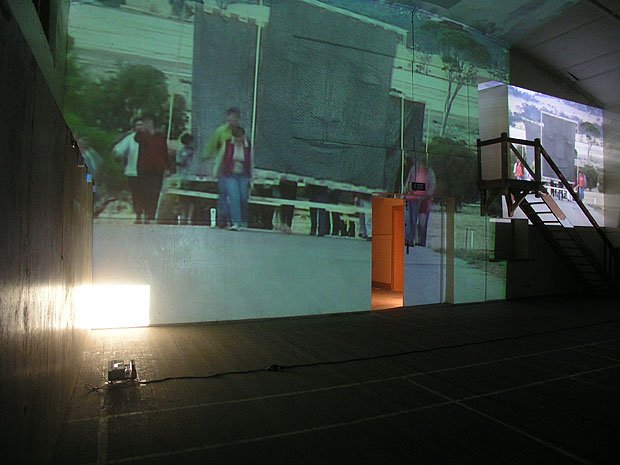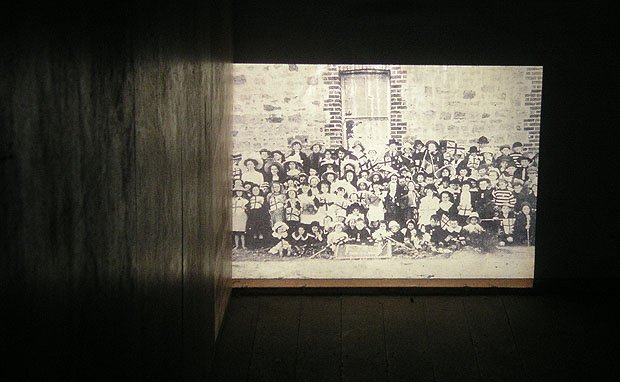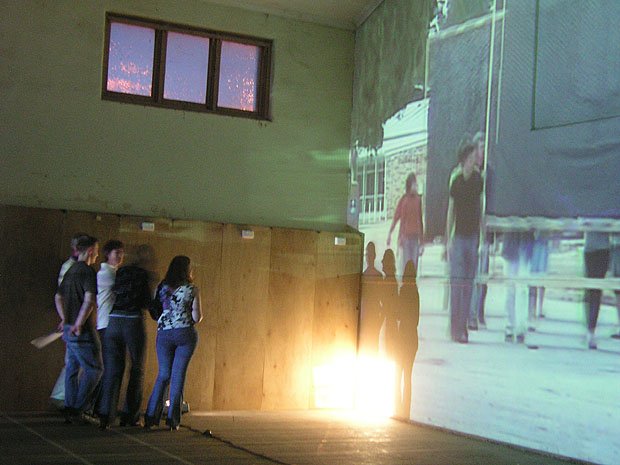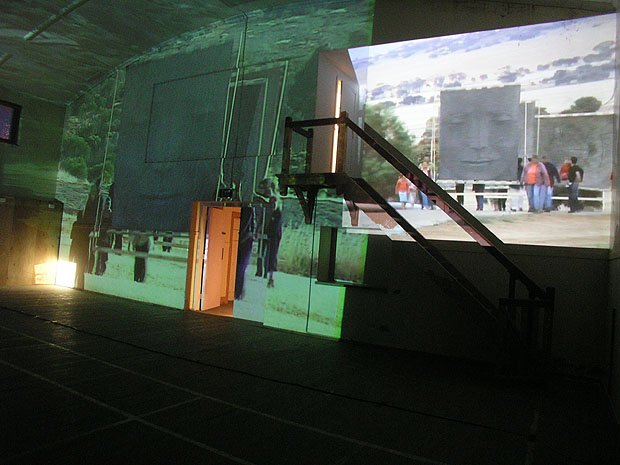Artist: Tom Nicholson
Work: Banner Marching Project (2004)
Location: Kellerberrin, Western Australia
"Berlin is an archeological find." "Berlin is a city of museums."
The above couldn't be said of any Australian city. It is the twin notion of the archeological and the museum, the parallel processes - investigative and discoursive - of history-making, that Tom Nicholson encountered in Berlin, and that initiated the first events of his Banner Marching Project.
Nicholson's Banner Marching Project had its origins in one of the few cities in the world that was literally divided by geopolitics, a city in which the culmination of early Twentieth Century colonial expansionism resulted in a war that halved the globe and was marked by a barrier, Die Mauer, that archetypal border. The subsequent Banner Marches, which took place in Australia, followed the lines of those international borders established during the Twentieth Century. The paths traced by the marchers' feet on streets far from the barriers themselves were all drawn during the century in which Australia was federated and became, in a sense, borderless.
Beginning his chronicle of the century on the 1st of January 1901, the date of Federation, Nicholson presents through its absence, Australia in relation to the notion of bordering. Nicholson is not unaware that Australia's 'engagement' with Indonesia since the invasion of East Timor in 1975 was a product of negotiation over issues pertaining to a maritime border, nor could he have been unaware of the infamous Children Overboard Affair and its ramifications for Australians' sense of their country's geographical porosity. But by having no reference to Australia's own active shaping of its geographical borders Nicholson at once presents the illusion of Australia's ahistoricity, its particular amnesia, and in a complex and paradoxical way iterates the doctrine that is now so easily ridiculed, the conceptual basis on which British Australia was founded: Terra Nulhus.
Through the communal act of staging marches, whether in inner-city Melbourne or in the Western Australian Wheatbelt town of Kellerberrin, Nicholson establishes a symbolic dynamic between local action and international events. Work of this kind could only have been created in the New World, because it is only in those recently colonized parts of the globe that the political is always bifurcated, always a kind of mirror image. The experience of living in the New World is always in a dynamic relationship with the Old World. Here in Australia experience is always essentially a HERE and possibly a THERE. In Australia, as in the United States - a country that hasn't undergone the process of decolonization - this splitting inherent in New World experience isn't necessarily apparent, despite the reality that it underlies most cultural production.
Complementing the political significance of the march and its enactment of notional borders are the banners, which with their images counterpoint the 'conceptualism' of the route walked. Presenting those who would see the march - by-standers or viewers in a gallery - with the sight of a banner bearing an ambiguous portrait, Nicholson doubles the bifurcation of the New World. Where here could be there, where the Third World could be the First World (were it not 'underdeveloped'), by enacting the uncomfortable similarity between the impersonality of the acts of political demonstration and mass consumption, both of which subordinate the individual to group action under the sign of the individual and its icon, the human face.
Despite the rediscovery of Conceptual Art in the last decade and the recent reawakening of interest in art as a vehicle for political concerns, Nicholson's Banner Marching Project is unusual in that it is a synthesis both the politics of the art of the 1970's and the critique of Image Culture of the 1990's. The Banner Marching Project's importance is mnemonic, reminding us of the historical divisions established during the late colonial era and of how those divisions now persist within the singularity of our experience of the split between here and there, 'us' and 'them', the crowd of marchers and their banner's impersonally smiling face.
John Mateer, 2005




